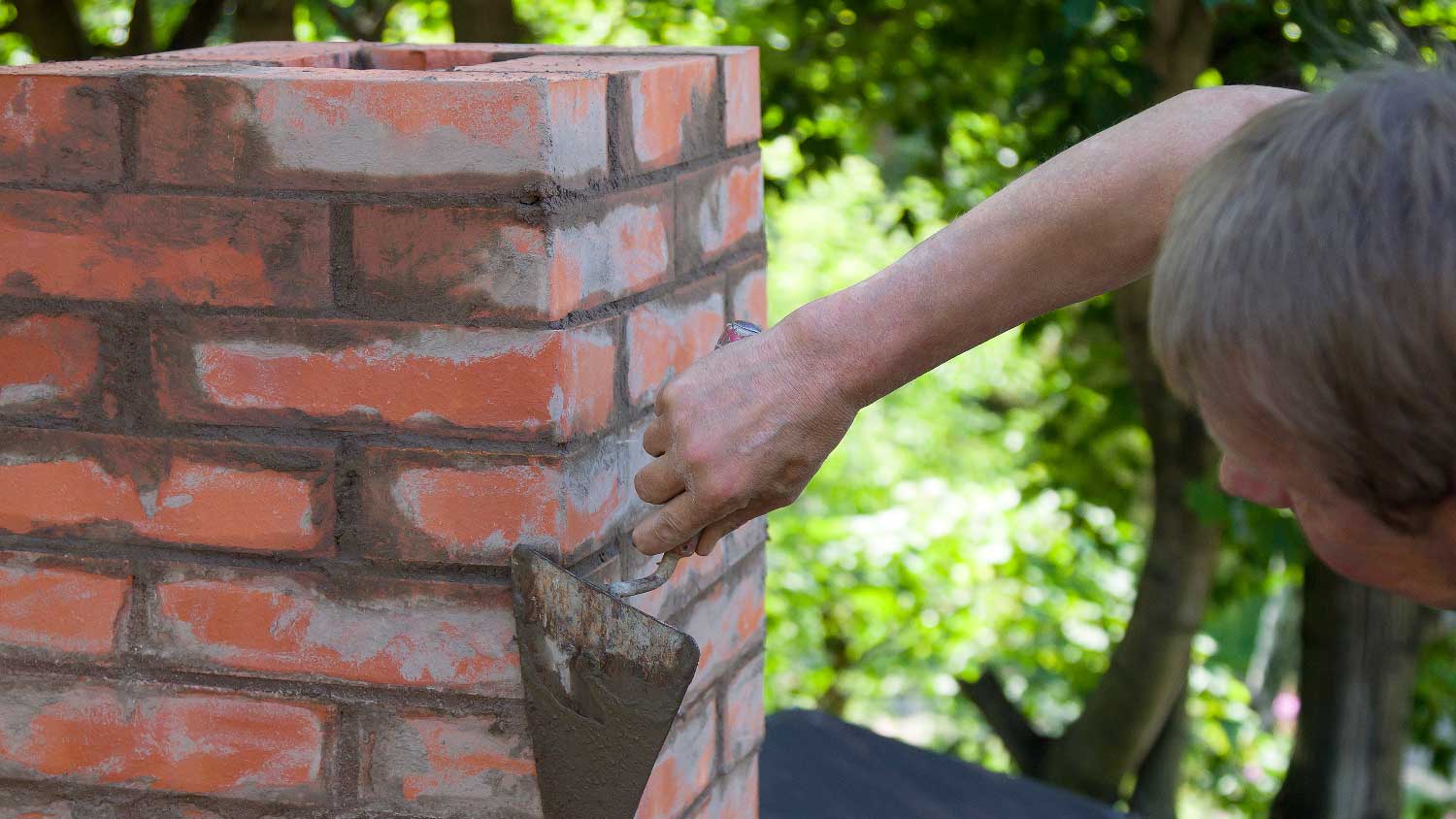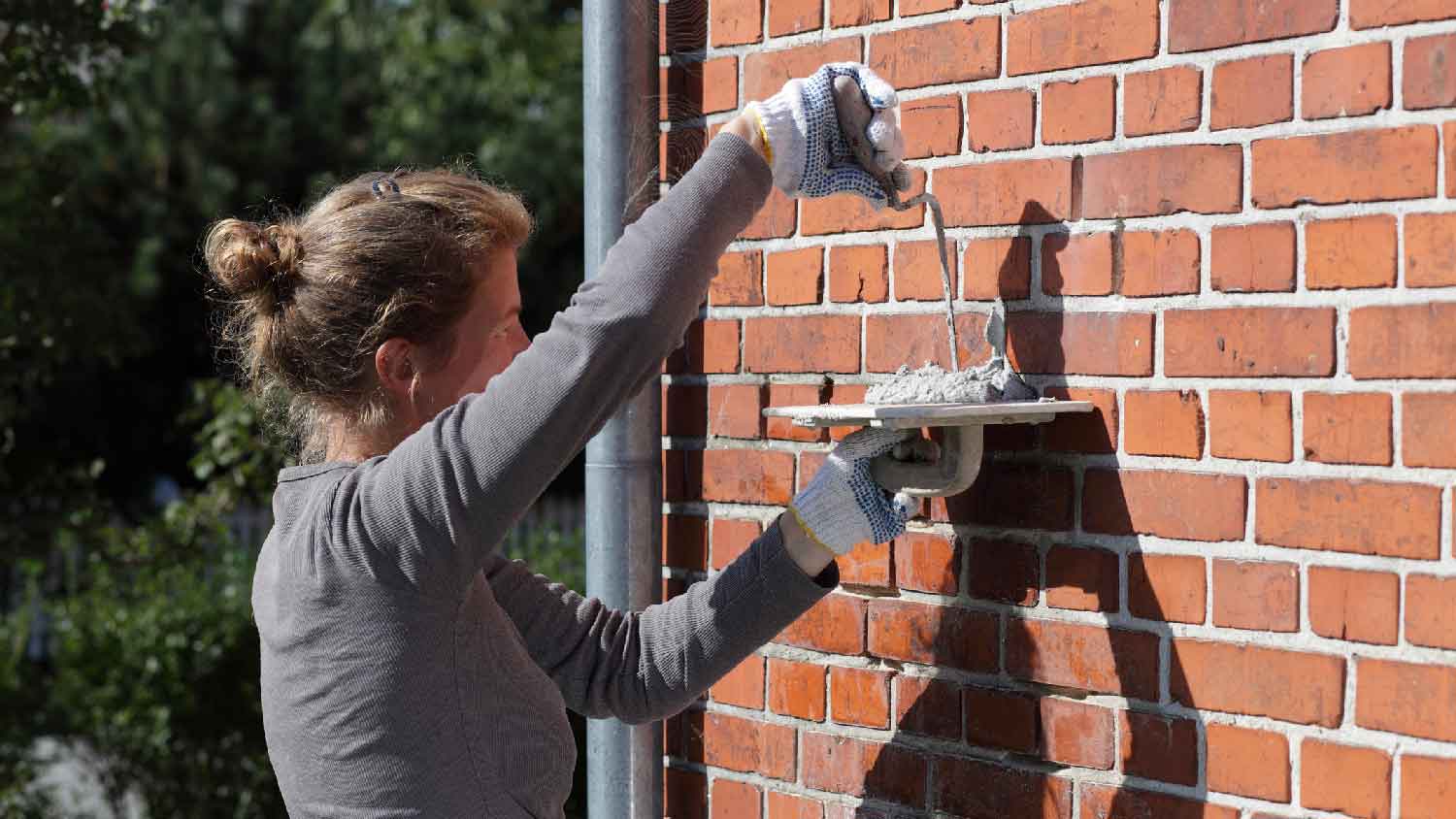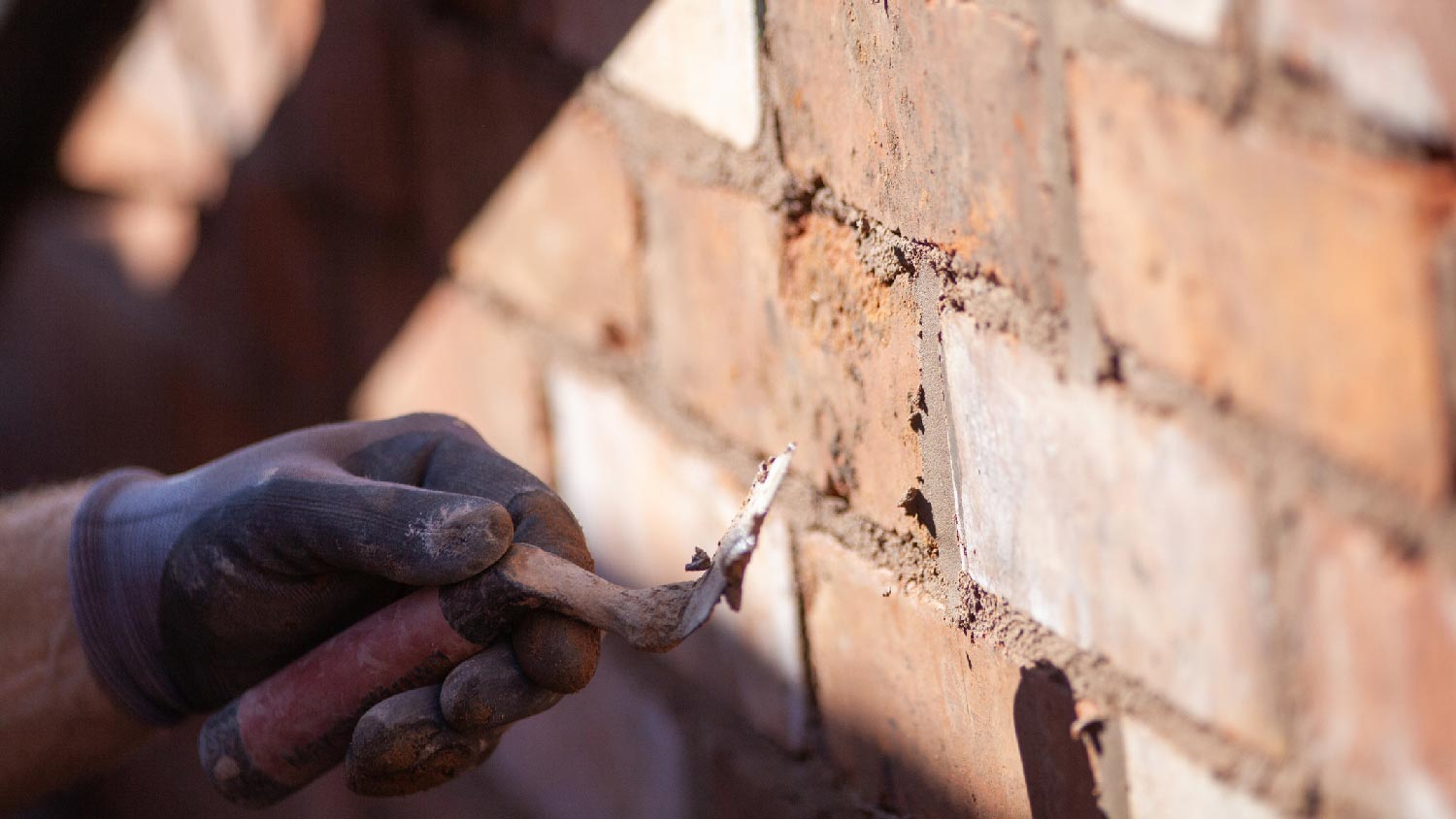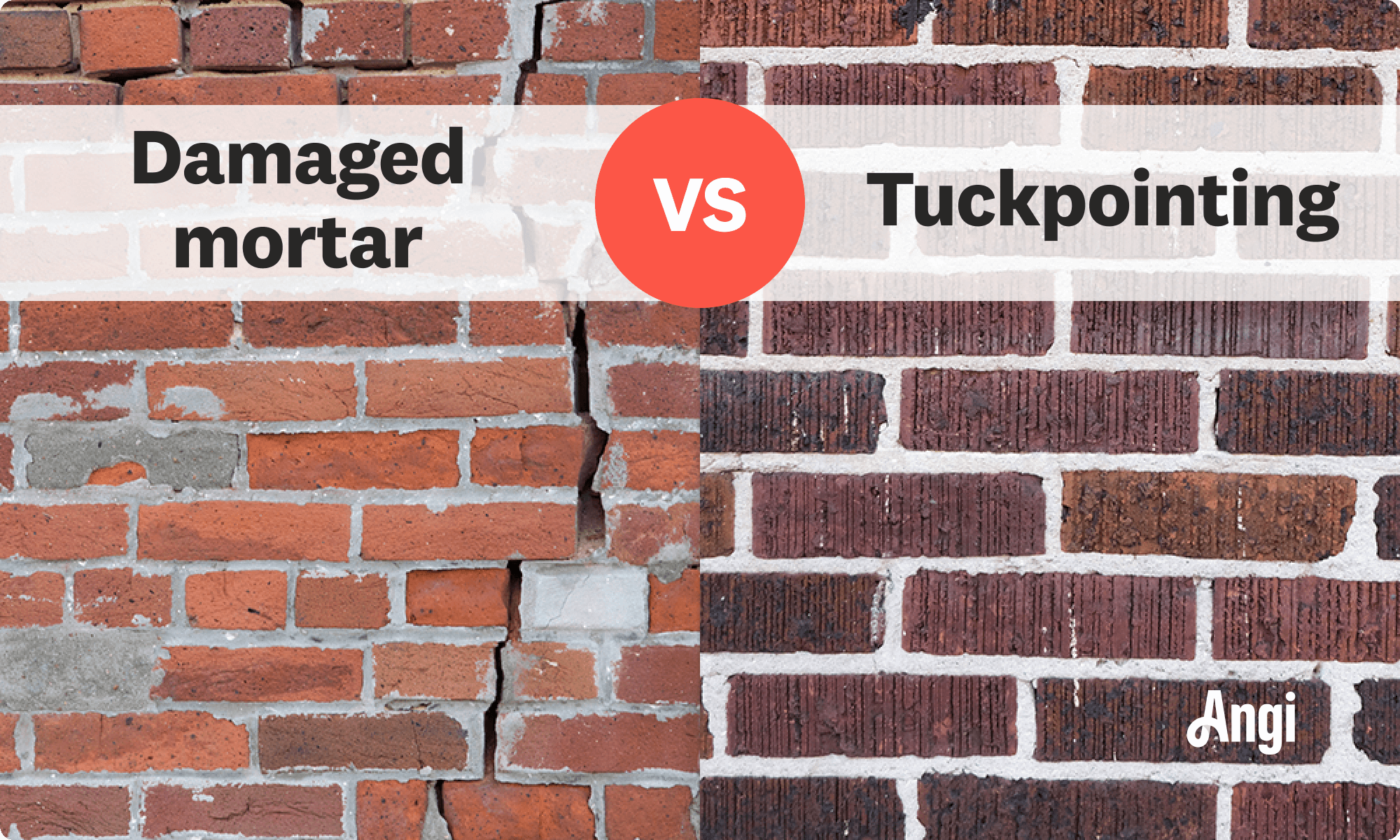
Discover the average chimney tuckpointing cost, key price factors, and expert tips to help you budget and save on your next chimney repair project.
Mortar is the binding force that holds everything together
Tuckpointing is an aesthetic fix that improves the look of old mortar.
Repointing is for more extensive joint repair: It involves removing and replacing damaged mortar.
Tuckpointing uses two different colors of mortar.
Repointing uses a single type of mortar that matches the original.
When comparing tuckpointing versus repointing, the first thing homeowners should know is that both help to maintain the durability and beauty of brick homes. Whether you're aiming to enhance your abode's curb appeal or strengthen its structure, learn the differences between these two types of mortar joint repairs.
Tuckpointing and repointing are two different brickwork repair techniques with different purposes. Tuckpointing is best for minor issues like small cracks; it enhances the look of your existing mortar. Repointing, meanwhile, involves removing and replacing damaged mortar.
| Type of Difference | Tuckpointing | Repointing |
|---|---|---|
| Purpose | Repair, aesthetics | Structural integrity |
| Materials | Two tones of mortar | One matching mortar |
| Process | Fill mortar joints | Replace old mortar |
| Visual Outcome | Uniform, fine joints | Maintain appearance |
| Average Cost | $1,500 | $1,450 |

Keeping your brick exterior in good shape maintains the investment you made in your home. While tuckpointing and repointing are two ways to enhance the integrity of your brickwork, here is how to determine which process suits your needs.
Tuckpointing is typically an aesthetic fix that repairs and enhances the look of old brick and mortar by sharpening the appearance of mortar joints. It is best for minor issues like small cracks or updating old mortar.
What makes tuckpointing important for proper maintenance is that it helps prevent minor problems from turning into significant damage, like bulging bricks from damaged mortar. Keep in mind that this is not a fix for deteriorated brick that often leads to water damage.
Conversely, repointing focuses on joint repair, which involves removing and replacing damaged mortar. The work addresses the weight distribution of bricks for stability, reinforcing the brick structure while preventing water damage.
Repointing is particularly effective when the damage is still manageable, like when bricks are beginning to loosen or show signs of crumbling. However, it will not solve severe structural issues when complete rebuilding is necessary.
Tuckpointing uses two different colors of mortar to give your existing brickwork a crisp, clean, and updated appearance. The first color matches the bricks and fills most of the mortar joint. This creates the appearance of narrow, sharp lines between the bricks. Afterward, a lighter color is applied in a thin line down the center of the mortar joint.
Repointing uses a single type of mortar that matches the original. The process focuses on maintaining or reinforcing the brickwork's structural integrity without altering its original appearance.

Any signs of deterioration to your brickwork should be addressed as soon as possible to preserve its structural integrity.

The most obvious signs that your home needs tuckpointing are small cracks, crumbling mortar, discolored mortar, or faded mortar. It bears repeating: Delaying these repairs can result in more costly and extensive issues.
Take a good look at your brickwork. If you notice large cracks and gaps, eroding mortar, or worse, loose bricks, it's time for repointing.
More signs of possible brick damage include damp spots, mildew, or white deposits on bricks, which suggest deteriorating mortar. Even a spike in heating or cooling costs could mean gaps in the brickwork are impacting your home's insulation. Remember, chimneys are especially prone to mortar issues. Remember chimney repointing is important for overall home maintenance.
Here’s additional information to inform your final decision.
If your brickwork is in reasonable shape and you're looking to boost your abode’s curb appeal, tuckpointing is a great option. The process creates clean and consistent mortar lines while contributing to your brickwork's structural integrity. It is a great project for chimneys that are often prone to wear and tear.
Your out-of-pocket costs for tuckpointing will range from $500 to $2,500. Project size, location, and the current condition of your brickwork will impact your total.
Since this is highly detailed work, it often costs a little more than repointing. To add more perspective to costs, restoring the mortar joints on a chimney generally runs about $10 per square foot. So, if your chimney spans 20 square feet, you’re looking at an expense of around $200. To obtain more accurate pricing, reach out to a local chimney repair specialist.
On the flip side, repointing focuses on reinforcing and sealing brick or stone. The process often involves removing and replacing deteriorated mortar joints with more substantial material to boost structural integrity. Keep in mind, while it doesn't have the significant visual impact as tuckpointing, it will boost your brickwork’s longevity.
Homeowners can expect their repointing costs to range from $400 to $2,500, depending on several factors. Labor costs in your area will impact the price per square foot, starting at $3 to $25. To keep your brickwork in tip-top shape, consider repointing bricks every 20 to 30 years or when you notice the mortar is separating from the brick.
From average costs to expert advice, get all the answers you need to get your job done.

Discover the average chimney tuckpointing cost, key price factors, and expert tips to help you budget and save on your next chimney repair project.

Your chimney inspection cost will vary based on the type of inspection, how accessible the chimney is, the chimney size, and the number of flues.

Sealing your chimney is one of the most affordable ways to prevent water from penetrating the bricks. This guide breaks down the cost to seal a chimney.

Parging a chimney’s smoke chamber is essential during installation or maintenance. We’ll explain what parging a chimney is and why and how it’s done.

What is repointing a chimney? Repointing a chimney is a necessary repair to keep your structure leak-free. Find out what’s needed and how long it lasts.

Cracks in your chimney crown will grow over time and cause serious structural problems. Learn how to repair a chimney crown and prolong your chimney’s lifespan.